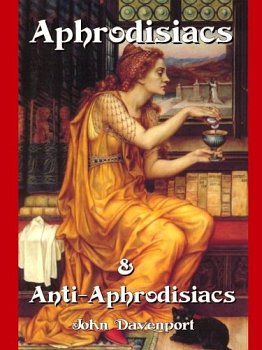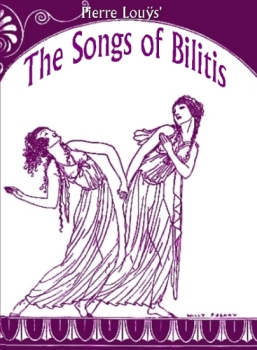The Green Project: Sustainable Aphrodisiacs
Friday, February 12 2010 @ 12:36 PM CST Views: 606

Eating and sex go hand in hand. In fact, people have been using edibles to get in the mood for centuries. (Hey, all kidding aside, Cupid ain’t stupid!)
Chloe Wittkop
 (This article should NOT be read by TeaBaggers, Palinites, Republicans, Retarded Conservatives, Fundamentalist Evangelical Christians (or do I repeat myself here?) It contains content that these intellectually deficient folks will find objectionable. It will be a damnable sin for these persons of questionable intelligence to read this type material. If you belong to one of these monikers then resist the temptation to click and read this article-- Remember Jesus is watching YOU 24/7! -- Resist the temptation and go give Pancake Pat Robertson more of your money! The rest of us, normal people, read on without consequence, without condemnation, without guilt)
(This article should NOT be read by TeaBaggers, Palinites, Republicans, Retarded Conservatives, Fundamentalist Evangelical Christians (or do I repeat myself here?) It contains content that these intellectually deficient folks will find objectionable. It will be a damnable sin for these persons of questionable intelligence to read this type material. If you belong to one of these monikers then resist the temptation to click and read this article-- Remember Jesus is watching YOU 24/7! -- Resist the temptation and go give Pancake Pat Robertson more of your money! The rest of us, normal people, read on without consequence, without condemnation, without guilt)
**********************
If you want to feel sexy AND smart this Valentine’s Day, it’s easy make green choices when it comes to aphrodisiacs—so you can feel the earth move, and tread lightly on the planet at the same time.
Top Eco-Friendly Erotic Eats
Oysters, mussels, and clams
Whether because of their yonic appearance, high protein content, or sensuous texture, oysters and their cousins, mussels, clams—cherrystones, littlenecks and quahogs—are always in demand for romantic dinners. Happily, they’re among the most sustainable sources of animal protein.
Many kinds of seafood are farmed unsustainably, over-fished, or caught in ways that kill by-catch (other sea life that’s captured by accident along with the target species). Not so these aphrodisiacs. Mussels are often farmed on ropes suspended in the water, one of the lowest impact aquaculture methods. And both they and their fellow bivalves filter algae and other particles, so their cultivation can actually improve water quality.
If you live near the ocean, your local supermarket probably carries fresh clams year-round, and fresh mussels from winter through early spring. But no matter where you live, you should be able to find decent oysters, clams, and mussels in the freezer section at the store. If you’re land-locked or they’re out of season, and you simply must have fresh shellfish, consider ordering from Browne Trading Company, a Maine-based retailer that sells many kinds of sustainably farmed and fished bivalves.
Chocolate
The fact that it’s the quintessential Valentine’s Day gift shows just how strongly we believe in the power of chocolate to get the sparks flying (or how susceptible we are to all those ads filled with leggy women in brown silk lingerie licking melty bits seductively from their fingers). Chocolate has been revered since the time of the Aztecs. They called it “nourishment of the gods,” and they were onto something.
Chocolate is packed with the endorphin-releasing chemical phenyl ethylamine, which is at its natural peak in the body during orgasm. The brain uses the tryptophan in chocolate to make serotonin, while a third chemical, anandamide, mimics the effects of marijuana. Taken together with the hundreds of other chemicals in chocolate, they can create an internal orgy of relaxation and bliss.
Theobroma cacao, or the cocoa tree, only grows in tropical regions, so for most of us, there’s no hope of buying local chocolate to reduce our carbon footprint. Don’t worry, though, you don’t have to forego chocolate to save the planet. Organic chocolates are chemical-free and shade-grown, preventing pollution and encouraging biodiversity. Fair trade chocolates come from farms where child labor is prohibited, environmentally responsible production methods are required, and farmers are paid a living wage.
Best of all, you don’t even have to shop at boutique grocers to find these sustainable choices. Fair trade and organic chocolates are available in most major grocery store chains. Look for brands like Dagoba, Green & Black, and Equal Exchange, or for a special treat, order some of Taza’s small-batch, stone-ground delicacies at Taza Chocolates. But be careful: At least three recent studies have shown that women actually prefer eating chocolate to having sex!
Honey
Scientifically speaking, honey is for the bees: B vitamins and boron, to be exact. The golden elixir is bursting with both. The former helps with testosterone production, while the latter helps preserve the body’s estrogen. Honey also contains easily digestible sugars, which can keep your energy (and your equipment!) from flagging at an inopportune time.
Bees pollinate nearly all the fruits we eat, as well as almonds (the country’s largest specialty crop export), many vegetables, and clover, on which many of the animals we eat are grazed. That puts them at the very center of our food system, where a threat to them can quickly become a threat to everything from our eating habits to our economy, so it pays to pay attention to where your honey comes from.
In order to protect their bees and continue to sell honey at high volumes, many beekeepers have chosen to treat their hives with chemicals to prevent pests and disease. Over time, this has resulted in chemical-resistant super-bugs and bees with no natural resistance to infection. Commercial beekeeping, where hives are shipped all over the country to pollinate whatever crop is in season at a particular time, may also be contributing to a severe decline in the honeybee population known as Colony Collapse Disorder.
By sticking to honey from local sources that don’t treat their bees, you can help ensure not only the bees’ survival, but the survival of everything from apples to watermelons. Find sustainable sticky stuff at your local farmers market during the spring and summer (check out http://www.localharvest.org to find a market near you), or visit http://www.honeylocator.com for a list of beekeepers and honey retailers in your area.
Asparagus
Asparagus is rich in vitamin E, known as “the sex vitamin” because of its essential role in regulating both men’s and women’s sex hormones. These little green stalks are also chock-full of folate, which aids in fetal brain and spine development. So if you’re looking not just to get laid, but to make a tiny new asparagus-lover, it’s a good tool for the job.
Unlike other suggestively shaped foods, asparagus is a perennial plant. Along with just a handful of other veggies, it comes back year after year, making it a nearly infinitely renewable resource. In fact, a well-cared-for asparagus bed can yield food for fifteen years or more. If you can find organic asparagus, more’s the better, or you can try growing it yourself in any temperate climate.
Depending on where you live, asparagus grows fresh from about February through June, so even if you don’t have a green thumb, you can still get your hands on it locally at farmers markets. Out of season, look for organic asparagus at Whole Foods.
No matter where it comes from, asparagus is a perfect food to share with a lover, or to eat seductively in front of one. Long, thin stalks are the most tender, and are delicious served dripping with a thick, creamy hollandaise. Eat them with your fingers, and if you drip a little, don’t worry, just find a coy way to lick the sauce away. But don’t share the bathroom after dinner. Asparagus contains a sulfurous compound that makes some people’s pee smell decidedly unsexy.
Truffles
Though somewhat gross in appearance, the scent of these rare, fragrant mushrooms is said to conjure “erotic and lustful memories” in both sexes. The chemical that gives truffles their characteristic musky odor is androstenol, a pheromone that closely resembles human—and boar—sex hormones. Female pigs, that have a keen sense of smell and a strong attraction to androstenol, are often used to forage for truffles, but tend to eat them before their handlers can wrest them away.
Their scarcity and the difficulty in harvesting them is actually what makes truffles sustainable. Though methods of cultivating these sexy-smelling mushrooms have been developed, they are still primarily harvested by foraging. This means that no chemicals, no heavy equipment, no irrigation, no soil management, and no other human interventions are required. Mother Nature does all the work her way, leaving for us the thrill of the search and the pleasure of a rare and valuable treat.
Most truffles in the United States come from Northern California, Oregon, and Washington, and you can order them from http://www.oregonwildedibles.com. More recently, ambitious growers in North Carolina’s Piedmont Valley have begun planting trees whose roots have been inoculated with truffle spores, and have successfully harvested black truffles. Order some for yourself at http://www.nctruffles.com.
Common Qualities?
There is no one thing that makes all of these “love bites” sustainable. Some can be grown or harvested locally, without fertilizer or pesticide, using responsible water management techniques, or without killing off other species. Others are actively good for the planet, and though it may sound counterintuitive, eating them insures their continued existence by creating demand in for them in the market. Some are organic, and some defy the possibility of organic labeling. Some have aphrodisiacal powers supported by science, while others are backed only by superstition. The only things these eco-friendly aphrodisiacs have in common is their ability to tantalize your palate, and hopefully your partner. And what could be better than making the planet greener with every orgasm?
http://www.edenfantasys.com
************************************
The Green Project: Herbs for Sex
Sarah Sloane
Queeriously Delicious
Long before the days of Viagra, vibrators, and streaming porn videos, we humans pursued new and better ways to heighten our sexual pleasure through every imaginable means. From dildos made of animal hides to dildos shaped like animals—no stone, nut or rock was left unturned by our fore-mothers and –fathers.
Herbage for Her
Because the world had yet to see the invention of medication (or rechargeable dildos, or Real Dolls), exploring the natural world for nookie enhancement became a calling of the highest order—just ask the local shaman (or his modern-day counterpart, hawking ‘natural male enhancement’ at 3:00am on cable).
We still use herbs today—especially those of us who are looking for ways to nourish and augment our bodies and biochemistry, without relying on chemicals or supporting the current bloated pharmaceutical industry. The challenge, though, is that there’s a veritable litany of inaccurate, unsafe, and downright dangerous information being passed along as fact—and precious few ways by which to pluck the good from the bad. And while we’re not experts in the realm of herbal research, we do want to talk about some of the herbs that are currently being touted as sexual enhancers—and try to separate some of the myths from the realities.
But first, the ubiquitous fine print:
Supplements are not subject to the Food and Drug Administration; therefore, they do not actually undergo scientific testing to ascertain various claims. Some supplements, in fact, can be harmful! Please be smart and do your research, and if at all possible speak with both holistic and traditional medical practitioners before self-treating with any herbal remedy.
For her pleasure:
Bayberry Bark
Bayberry bark has been used to address different female health issues, most notably as a douche to treat excess discharge (leukorrhea) from the vagina and cervix, as well as to increase blood flow. However, it’s also used for vegetable tanning leather—so if you go this route, you’ll want to be very careful about the accuracy of your measurements…we don’t want to think about what the negative effects might be (because, kiddies, nobody wants a vagina that feels like the finest cowskin).
Black Cohosh
Also called squawroot, black cohosh has compounds that mimic the effects of estrogen, balancing the body's hormone levels. Some studies have shown that it can improve symptoms of menopause such as hot flashes, mood disturbances, diaphoresis, palpitations, and vaginal dryness—and for women who have those symptoms, you can bet that any relief from them would definitely help get the sex drive back on track!
Dong quai ( Angelica sinensis )
Also known as Chinese Angelica, has been used for thousands of years in traditional Chinese, Korean, and Japanese medicine. It remains one of the most popular plants in Chinese medicine, and has been called "female ginseng," based on its use for gynecological disorders (such as painful menstruation or pelvic pain), recovery from childbirth or illness, and fatigue/low vitality. Dong quai seems to have minimal side effects for many women, and has been getting a great deal of positive press lately.
Cayenne Pepper
Cayenne Pepper has been highly touted as a remedy for poor circulation—and the better the circulation, the more our bits get engorged, n’est ce pas? In fact, some sexual lubricants use Capsicum (the chemical component of Cayenne that causes the heat) as a vasodilator to increase stimulation—so while we don’t know that you’d want to use undiluted Cayenne right there, you certainly could try it in other ways. Additionally, it has been used to help regulate menstrual cycles—and being able to rely on your Aunt Flo to arrive on time is often a boost when it comes to planning a hot night of sexing.
Sage Leaf Extract
Sage leaf is used to regulate a women’s menstrual cycle and improve circulation. Again, a regular cycle makes for a generally more relaxed woman—which makes for better sex.
SAMe
SAMe is used for, among other things, infertility, premenstrual disorders and musculoskeletal disorders. Again, this is a substance that has received a good deal of research, and there are a number of indicating studies that show that, especially for musculoskeletal health, SAMe shows considerable promise.
Soy
Soy, and components of soy called isoflavones, have been studied for the treatment of many health conditions. Isoflavones are believed to have estrogen-like effects in the body, and as a result, they are sometimes called phytoestrogens. Laboratory studies aren’t able to determine whether these phytoestrogens block or stimulate the production of natural estrogen; however, there are a number of studies that show that the female libido can increase with the addition of soy to your diet. Tofu Surprise with a side of edamame, anyone?
Wild Yam
Wild Yam contains a natural steroid called dehydroepiandrosterone (DHEA) that rejuvenates and gives vigor to lovemaking, as well as being used by many women as a way to minimize the effects of menopause, such as hot flashes. This is usually found as a cream that you rub into your skin (no, not there!) in order to experience the chemical benefits of the plant.
For His Pleasure
Arginine
Arginine is a natural substance that during processing turns into nitric oxide, which causes blood vessel relaxation (vasodilation). Early studies point to the idea that arginine may help treat medical conditions that improve with vasodilation, such as chest pain, clogged arteries, coronary artery disease, erectile dysfunction, etc. Arginine also triggers the body to make protein and has been studied for wound healing, bodybuilding, enhancement of sperm production (spermatogenesis), and prevention of wasting in people with critical illnesses. So—for keeping your boy up (and your swimmers swimming), it may be a great supplement to consider.
Fenugreek
Fenugreek is another herb that has acquired a reputation as an aphrodisiac. Chemical analysis has revealed the presence of diosgenen, a substance that acts in a similar way to the body's own sex hormones. Fenugreek has long been recommended by Chinese herbalists for impotence—I guess this is one of the real “ancient Chinese secrets”, eh?
Gotu Kola
Gotu kola (not to be confused with Hota Kotb, who should in no manner be ingested) improves circulation as well as enhances mental performance and concentration. As we’ve mentioned before – healthy circulation is very important to a healthy sex life, and additional mental acuity means that you’re less likely to yell out “Angelina” or “Brad” accidentally in bed.
Ginger
Ginger is a relative of Cardamon, and well known for its warming, aromatic properties. In an article titled "Studies on Herbal Aphrodisiacs Used in the Arab System", published in the American Journal of Chinese Medicine, some Saudi scientists asserted that ginger extracts significantly increase sperm motility and quantity. (Motility means capable of moving spontaneously and independently—which, when you consider it, is kind of unnerving when you think about sperm doing it).
Tribulus
No, it’s not the name of those fuzzy things on Star Trek – tribulus is an herb that has been shown to help with impotence and infertility, as well as stimulate hormone production. (This is a main ingredient in Enzyte*—you know, Smiling Bob’s enhancer of choice?). In fact, studies show that it can actually boost testosterone levels—and, at least in animals, induce rutting behavior (which, by the way, means “mounting other animals”).
Saw Palmetto
Native American Indians considered the ripe fruits of the saw palmetto a tonic and an aphrodisiac. The berries do, in fact, have a toning effect on the male reproductive system and have been employed for impotence and prostrate problems. It can be used to treat prostate enlargement and cystitis. Saw palmetto ( Serenoa repens , Sabal serrulata ) is used popularly in Europe for symptoms associated with benign prostatic hypertrophy (enlargement of the prostate). Although not considered standard of care in the United States, it is the most popular herbal treatment for this condition, and thus is very easy to find in pretty much any drugstore with an herbal supplements section.
Yohimbe bark
Yohimbe bark comes from west Africa, and is said to expand the blood vessels in the penis and increase blood flow. It also claims to increase nitrous oxide (NO), which is important for producing an erection. However, renal failure, seizures, and death have been reported from the use, or misuse, of this herb. Most sources suggest that one never take a product containing yohimbe if they have high blood pressure. Of course, high blood pressure carries its own set of problems when it comes to physical activity – like good sex, for instance.
For Both
Cardamon
Cardamon is an aromatic spice, held in high esteem by the Arab culture as an aphrodisiac. Cardamom’s sexual nature is centered in its high content of cineole, which is a central nervous system stimulant. As most of us are aware, people often equate any stimulation as a sexual stimulation; a caffeine buzz can get us going, so why not a bit of a sexually arousing buzz from cardamom?
Damiana
Damiana is good for improving blood flow to the genital area and increasing desire. It can also benefit the hormonal balance of the body, bringing things to a healthier, more natural level. Many studies report that the loss of sexual arousal can be dependent on hormonal imbalances, so making sure that your body’s chemicals are well regulated can be a first step towards regaining (or improving) your sexual response.
Ginkgo Biloba
Ginkgo improves circulation to the penis as well as acts to alleviate the symptoms of depression, which may be a cause of impotence. Ginkgo also stimulates the mind and helps with concentration. Although not definitive, there is promising early evidence favoring the use of ginkgo for memory enhancement in healthy subjects, altitude (mountain) sickness, symptoms of premenstrual syndrome (PMS), and reduction of chemotherapy-induced end-organ vascular damage. So, the overall benefits of ginkgo are only partly related to our sex life—it has the potential to improve other aspects as well.
Ginseng
Ginseng is well known as a sexual stimulant, and was initially used in Chinese herbal medicine. It is both a stimulant and relaxant on the central nervous system, improves muscle stamina and function, and is used as an additive in many energy drinks sold in the U.S. and overseas. Its use has become almost global; it’s found in dozens of “vitality” formulas available over the counter worldwide. One thing to be careful of is that ginseng can cause problems for people who have blood pressure issues, are pregnant, or have other physical challenges, so be sure to research before you use it.
There are tons of supplements out there – we’ve only covered a brief list. The important things to remember are:
1. Not everything that says it’s good for you actually is. Do your research.
2. No amount of supplements will make up for a lack of creativity and fun when it comes to sex.
3. A healthy body, coupled with a creative and engaged mind, is the best recipe for a great sex life.
*(Enzyte® Proprietary Blend:
Tribulus Terrestris extract (aerial), L-Arginine Base, Korean Ginseng, Maca (Lepidium meyenii), Orchic Substance, Epimedium Sagitatum extract, Yohimbe Extract (Pausinystalia yohimba), Muira puama, Avena Sativa extract, Zinc Gluconate, Ginkgo Biloba extract , Saw Palmetto (Serona repens), Niacin, Copper Gluconate, Octacosonal, Thymus Gland. )
http://www.edenfantasys.com
********************************************
Sex Drive Diet: Going Nuts
Recently scientists released a diet that can boost libido.
Our physical shape, emotional state, hormones and immune system are greatly dependent on the food we consume. Once again, researchers have confirmed the link between the food we eat and our physical and emotional health. They even came up with a diet that is promised to increase your sex drive. Here are top 10 foods to help you kick up some heat between the sheets.
Honey
Honey is rich in barium which increases testosterone level, which in turn causes increase in both male and female libido. Barium also improves metabolism, which leads to a better physical shape and sexual drive.
Nuts
Not all cholesterol is bad . The lack of good cholesterol contained in nuts causes low libido. To prevent it from happening, include nuts and seeds containing fatty acids in your diet.
Oils
Vegetables are primary source of oil. Cold-pressed oils contain more nutrients and vitamin E required for sustaining hormonal balance than heat treated ones. Read labels carefully to make sure you are buying the best oil.
Raw oysters
This is one of the classic aphrodisiac. In fact, all sea food is rich in minerals known to increase libido. Minerals from sea food are easily digested.
Eggs
Eggs are a symbol of fertility and rebirth. Eggs are choke-full of vitamins and nutrients. They contain B6 and B5 vitamins that help balancing hormonal level and sustain energy.
Pears
Just like eggs, pears, spinach, yeast, carrots, fish, potatoes and milk are a good source of B6, which leaves you with plenty of choices.
Red meat
Red meat, as well as dark poultry meat, is a good source of zinc which reduces the amount of prolactin hormone. Excessive levels of prolactin cause sexual dysfunction.
Brown Rice
Brown rice or multigrain bread is a good vegetarian substitute for red meat. These products are also an excellent source of zinc.
Chocolate
Apart from being a great brain activity booster, multifunctional chocolate creates a feeling of satisfaction and improves mood. It contains substances that stimulate neuromuscular facilitation.
Seaweed
High content of iodine makes seaweed indispensible for normal functioning of the thyroid gland responsible for women’s libido. Seaweed can be enjoyed in salads, sushi and sushi rolls.
Oatmeal
Surprisingly, oatmeal increases testosterone level. A cup of oats a couple of days a week and three cups of oat broth are sufficient to notice the effect.
Trud.ru
*********************************************

http://hiddenmysteries.com/xcart/product.php?productid=19686

http://hiddenmysteries.com/xcart/product.php?productid=19645

http://hiddenmysteries.com/xcart/product.php?productid=19401

http://hiddenmysteries.com/xcart/product.php?productid=19254

http://hiddenmysteries.com/xcart/product.php?productid=18916

http://hiddenmysteries.com/xcart/product.php?productid=17466

http://hiddenmysteries.com/xcart/product.php?productid=19662

http://hiddenmysteries.com/xcart/product.php?productid=19659








What's Related